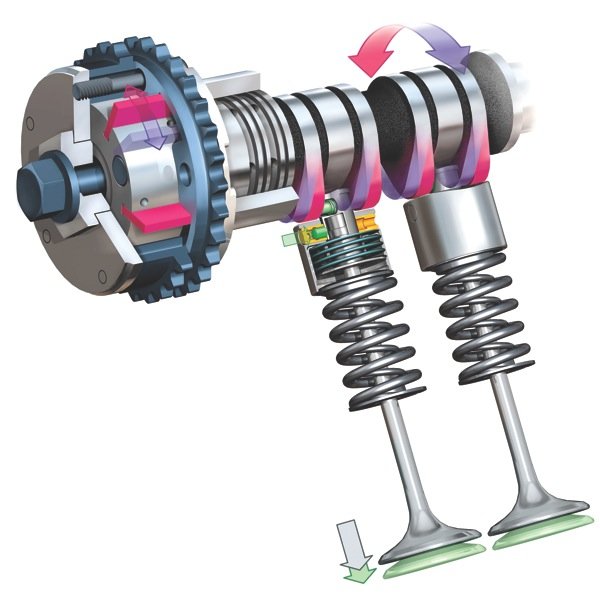Hello, Guys First I will tell you what are valves and how they work, and also tell you about VVT (Variable valve timing).
There is basically 4 valves per cylinder 2 for intake and 2 for exhaust. The main purpose of the valves is to breathe air in or out into the engine. When the intake valve is open using a camshaft the mixture of air and fuel enters the cylinder and after the power generation process the exhaust valve is opened again using the camshaft the gases are released from the cylinder. But this valve work exactly same on all rpm range which is not good for power, fuel economy or emission, hence VVT(Variable valve timing) is used.
Variable Valve Timing (VVT) is the process of altering the valve timing and valve lift and valve duration, and this process is used to improve performance, fuel economy and emission.
Valve Timing decides at what rpm the valves open and close.
Valve Duration decides how long the valves stay open.
Valve Lift decides how far the valve lifts off its original position.

These all process is controlled by a computer which can constantly change according to the situation.
Let’s see an example if an exhaust valve is open for long in one stroke all the exhaust gas would leave the cylinder creating more area for new air and fuel mixture to breathe in the next stroke, which can generate more power. On the other hand, if the exhaust valve is opened for a short period there could be some gas left on the cylinder for the next stroke, this creates a small engine displacement for a moment which can give you better fuel economy.
There are various companies that have their own name for this system. Though Fiat was the first to patent VVT in 1960, Alfa Romeo was the first to use VVT in the production car called as CVVT. Most famous is Honda’s Vtech. There are numerous ways all the companies use this system for eg fiat Multiair uses hydraulic pressure.
- AVLS (Subaru)
- CPS (Proton) but proton use vvt engine for their new model of 2016
- CVTCS (Nissan, Infiniti)
- CVVT (Alfa Romeo, Citroën, Geely, Hyundai, Iran Khodro, Kia, Peugeot, Renault, Volvo)
- DCVCP – dual continuous variable cam phasing (General Motors)
- DVVT (Daihatsu) (Perodua)
- MIVEC (Mitsubishi)
- MultiAir (Fiat)
- N-VCT (Nissan)
- S-VT (Mazda)
- Ti-VCT (Ford)
- Valvetronic (BMW)
- VarioCam (Porsche)
- VCT (Ford, Yamaha)
- VTEC, i-VTEC (Honda, Acura)
- VVC (MG Rover)
- VVL (Nissan)
- Valve lift (Audi)
- VVEL (Nissan, Infiniti)
- VVT (Chrysler, General Motors, Proton, Suzuki, Isuzu, Volkswagen Group)
- VVT-i, VVTL-i (Toyota, Lexus)
- VTVT (Hyundai, Kia)
List from Wikipedia page: https://en.wikipedia.org/wiki/Variable_valve_timing
Variable Valve timing is a must in all the new cars and this technology has brought a revolution in automobile technology.

